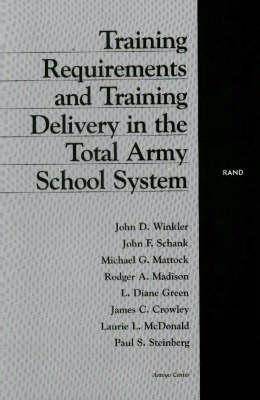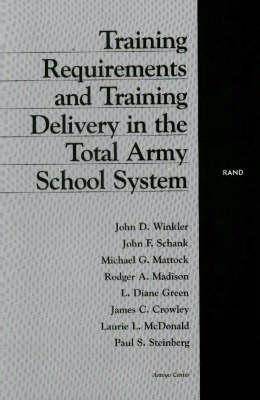
Door een staking bij bpost kan je online bestelling op dit moment iets langer onderweg zijn dan voorzien. Dringend iets nodig? Onze winkels ontvangen jou met open armen!
- Afhalen na 1 uur in een winkel met voorraad
- Gratis thuislevering in België vanaf € 30
- Ruim aanbod met 7 miljoen producten
Door een staking bij bpost kan je online bestelling op dit moment iets langer onderweg zijn dan voorzien. Dringend iets nodig? Onze winkels ontvangen jou met open armen!
- Afhalen na 1 uur in een winkel met voorraad
- Gratis thuislevering in België vanaf € 30
- Ruim aanbod met 7 miljoen producten
Zoeken
Training Requirements and Training Delivery in the Total Army School System
John D Winkler, John Schank, Micael G Mattock, Rodger A Madison, Diane Green
Paperback | Engels
€ 20,95
+ 41 punten
Omschrijving
This report analyzes the Reserve Components school system's ability to meet training requirements for noncommissioned officers (NCOs) and for soldiers who are not duty-MOS qualified (DMOSQ), focusing on a prototype reorganized school system in its baseline and execution years (fiscal years 1994 and 1995) and comparing it to the system as a whole. In terms of training NCOs, requirements are large but decreasing and capacity is better able to meet demand; however, utilization of that capacity is inefficient and growing worse, leading to a slight decline in graduates. In terms of DMOSQ training, requirements are decreasing, capacity is increasing, and utilization is improved but still problematic, leading to an increase in graduates. The prototype compares favorably to the system as a whole in both of these areas. The report recommends increased management oversight and new policies to improve the utilization of training capacity throughout the school
Specificaties
Betrokkenen
- Auteur(s):
- Uitgeverij:
Inhoud
- Aantal bladzijden:
- 108
- Taal:
- Engels
Eigenschappen
- Productcode (EAN):
- 9780833027115
- Verschijningsdatum:
- 13/10/1999
- Uitvoering:
- Paperback
- Formaat:
- Trade paperback (VS)
- Afmetingen:
- 152 mm x 229 mm
- Gewicht:
- 453 g

Alleen bij Standaard Boekhandel
+ 41 punten op je klantenkaart van Standaard Boekhandel
Beoordelingen
We publiceren alleen reviews die voldoen aan de voorwaarden voor reviews. Bekijk onze voorwaarden voor reviews.











